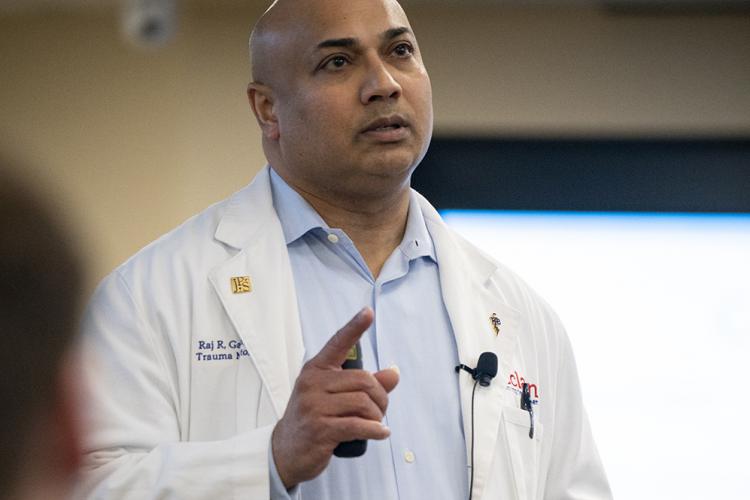
Adopting new blood conservation techniques will be “a win-win-win situation” for JPS Health Network, its patients and Tarrant County Taxpayers, according to Dr. Rajesh Gandhi, Medical Director of Trauma Services there.
“By being a good steward of our resources, we can take better care of our patients – including those who don’t want transfusions for religious or other reasons,” Gandhi said. “It’s good for them, it helps preserve our precious blood supply and it’s good for the taxpayers to save some money.”
Last week, a region-wide lack of blood products caused Carter BloodCare to declare a critical shortage for the first time in the organization’s two-year-long relationship with JPS as its blood provider. On Friday, John Peter Smith Hospital had 12 units of O Negative blood in stock. Typically, the minimum standard is 35 units of O Negative in inventory. Gandhi said the shortage was cause for concern because it’s not unusual to use 10-20 units of blood products on a single trauma case. Sometimes, more extreme cases can require 60-80 units.
What can be done to preserve blood?
In addition to using things like pressure, tourniquets and quick-clotting agents in the trauma bay to stop excessive bleeding, there are a lot of things that can be done in other parts of the hospital to save blood, Gandhi said. They include:
- Recycling the patient’s own blood through cell salvaging
- Opting for less invasive surgical techniques or alternatives to surgery when possible
- Doing fewer blood draws for diagnostic testing
Gandhi said it costs about $100 to cleanse – or salvage -- the patient’s own blood with a Cell Saver machine then reintroduce it to the body as compared to infusing expensive donated blood. The cost of one unit of donated blood falls between $500 and $1,500, so it can decrease costs – and a patient’s bill -- by thousands of dollars to recycle blood while reducing the risk of a transfusion-related health issue. The result is a just as positive – if not better – outcome for patients than what has been achieved through traditional blood management practices.
Robotic microsurgery has reduced the need to do more invasive traditional forms of surgery, according to Gandhi, as has cryosurgery, using intense cold from liquid nitrogen or argon gas to destroy abnormal tissues such as skin cancer. Cancer can also be treated with precision radiation therapy instead of surgery in some cases.
While decreasing blood draws for testing might sound like a minor savings, it adds up quickly. It’s typical in hospitals around the country to test a patient’s blood every day they stay in the hospital to monitor their condition. But that’s a practice medical experts have challenged. They say blood should only be drawn if there is a specific reason for a test as opposed to doing it as part of the daily patient care routine.
“If 30 CCs of blood is drawn a day for a seven-day stay in the hospital, that’s 210 CCs over the course of the week,” Gandhi pointed out. “One unit contains 250 CCs of blood. So, eliminating unnecessary testing could save nearly a unit of blood per week per patient if blood work was reduced to an as-needed procedure instead of being an everyday event, whether a doctor orders it or not.”
Only a handful of hospitals across the country have been certified by The Joint Commission in Patient Blood Management. JPS hopes to join that group before the end of the year. RN Callie Crawford, trauma educator at JPS, said she’s proud to see the health network stay on top of the newest life-saving techniques and hold itself to the highest standards.
“We always want to be sure we’re keeping up with the latest evidence-based processes and staying on the front edge of patient care,” Crawford said. “The goal is always to produce the best patient outcomes possible.”
